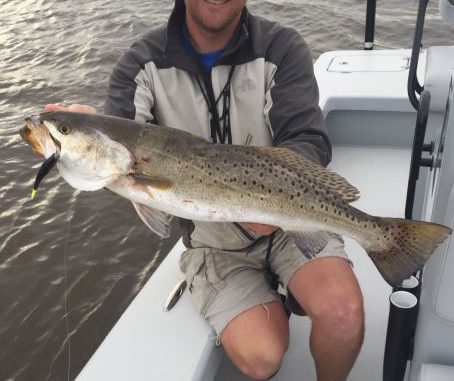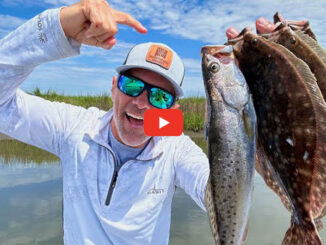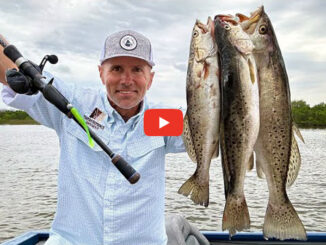
Prevailing southeast winds this month mean targeting oyster reefs on the south bank
When Capt. Nick Poe contemplates catching Calcasieu Lake speckled trout during the month of May, factoring in the typical prevailing wind this time of year plays a big part in his daily plan of attack.
“When I think of May, I think of a strong southeast wind, so that really pretty much narrows your options down,” said Poe, with Big Lake Guide Service. “You’re going to have to fish south in May — that’s where we mostly fish this month, on all the oyster reefs on the south bank so you’re protected from the southeast wind.”
Popular community spots, like the Chenier (or LSU) Reef, are stacked with boats on weekends, and Poe said learning which reefs are alive — and which are just old oyster shells — can be key to catching more trout.
“A lot of those reefs down on the south end of the lake are not living reefs anymore,” he said. “The oyster shells are still there, but it’s just a shell — the oysters aren’t living. They don’t attract the bait like they used to, but you can still catch fish on those reefs.”
That leads to Poe’s main piece of advice this month — keep moving to find the fish.
“The biggest thing I try to do is cover a lot of ground in May down on the south bank, and I’m constantly looking for slicks and I’m constantly looking for birds,” he said. “Those fish a lot times don’t hold on those reefs — they’ll move through, and you’ll hit them at times.”
Poe typically starts his day in shallower water and moves deeper as time passes.
“Early in the morning, I would say to shoot for depths in the 5-foot range. As it gets later in the day, you’d want to move to deeper reefs,” Poe said. “That’s how I fish. As the water temperature starts to rise and the sun gets higher in the sky, it seems like you can move out a little deeper to 6 or 7 feet of water and catch them.”
The bite can kick in early, so Poe suggested being in position at sunrise with a topwater lure at the ready.
“It’s a lot of prospecting. I’ll just go to an area and start looking,” he said. “You can cover a lot of ground with a topwater because you can cast it so far. If you get a blowup, that tells you the fish are there.
“Then you need to figure out how to catch them — whether it be on a suspending bait, or a jig or maybe you can catch them with your topwater. But a lot of times they’ll eat a suspending bait better than a topwater.”
Topwater-wise, he favors a chrome lure with a blue back on sunny days, while he opts for something chartreuse if the water is stained or dirty. If it’s a little choppy, he goes with a Super Spook or a She Dog that spits a lot of water, and if it’s calm, he tones his presentation down with a MirrOlure MirrOmullet XL.
But he said to not really stress out over the color.
“It’s a confidence thing,” Poe said. “If you think you’re going to catch one on it you probably will. But if you don’t have confidence in it, you probably won’t.”
He typically throws a Paul Brown Soft Dine or a regular MirrOlure MirrOdine as his go-to suspending baits, but also will go with a Fat Boy if he suspects larger specks are lurking in the area.
To jig down off the reef, Poe recommends MirrOlure Lil Johns on ¼-ounce jigheads in a variety of colors: purple, glow, chartreuse, opening night or golden bream.
“You’ll get hung up sometimes,” he said. “But a lot of those reefs down there are dead, so you don’t get hung up like you used to.”
And Poe said not to be deceived by the water’s uncharacteristic reddish tint — water from record flooding at Toledo Bend the Sabine River arrived in March, but hasn’t impacted the speckled trout fishing.
“We’ve got the freshwater, but the fishing has been excellent. The water was so red that it scared a lot of people off who thought it was muddy,” Poe said. “And it was muddy compared to what it normally looks like, but it’s good enough to catch fish in.”
A nice 4 ½-pound female he caught and cleaned in mid-April didn’t have a hint of eggs yet — a good sign the trout hadn’t yet begun seeking saltier water for the spawn.
“If we’d have gotten the flood in May, then we might have been in a bad bind,” Poe said. “But I think we’re alright now as far as that goes.”


